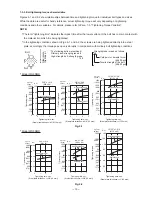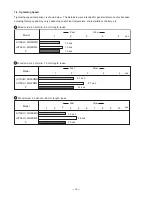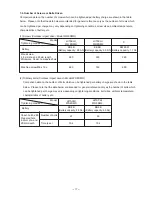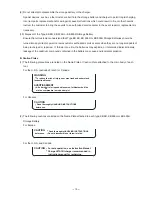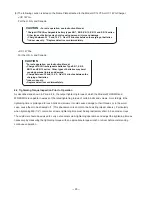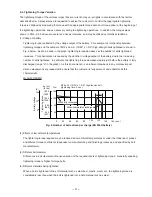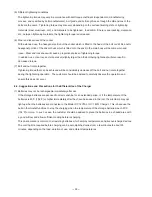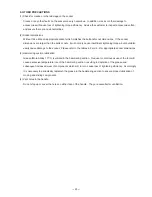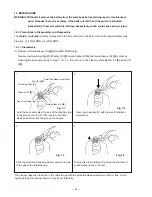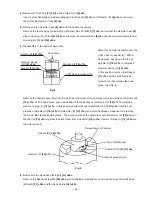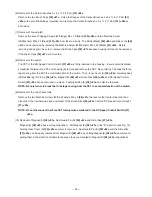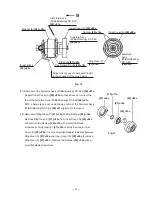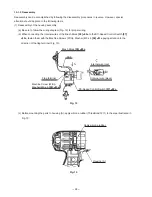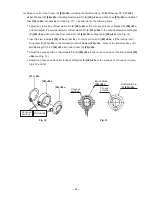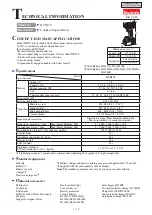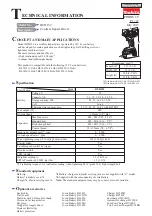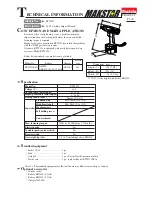
--- 14 ---
7-3-2. Screw diameter and appropriate tightening torque
Generally speaking, the appropriate tightening torque for a screw can be determined by the strength grade of the
screw and the material tightened. Tables 1 and 2, and Fig. 4 below list data relative to the strength grade of
various screws and the appropriate tightening torque. For further reference, appropriate tightening torque is
calculated with the following formula. Study and use this formula for accurate selection of tightening torque.
T=k
•
d
•
p
T: Appropriate tightening torque (kgf
•
cm)
k: Torque coefficient (0.17)
d: Nominal diameter for the screw (mm)
p: Recommended axial tightening force to be applied to the screw (kgf)
p=rated axial stress (kgf/cm
2
) x 0.8 x effective sectional area of the thread (mm
2
)
•
Strength grade and rated axial stress of threads
Strength grade
Rated axial stress (kgf/mm
2
)
Material
Heat treatment
4.8
6.8
8.8
12.9
29.1
43.7
58.2
95
Mild steel
Alloy steel including Ni, Mn, Cr, etc.
None
Processed-hard material
•
Diameter and effective sectional areas of threads
Kind of thread (x pitch)
Effective sectional area of
thread (mm
2
)
M5 x 0.8 mm
(3/16")
14.2
M6 x 1 mm
(1/4")
20.1
M8 x 1.25 mm
(5/16")
36.6
M10 x 1.5 mm
(3/18")
58.0
M12 x 1.75 mm
(15/32")
84.3
M14 x 2 mm
(9/16")
115
•
Thread diameter and appropriate tightening torque
Fig. 4
Table 1
Table 2
Strength grade 12.9
(high-strength bolt)
Strength grade 8.8
(high-strength bolt)
Strength grade 6.8
(ordinary bolt)
Strength grade 4.8
(ordinary bolt)
0
0
5
(3/16")
6
(1/4")
8
(5/16")
10
(3/8")
12
(15/32")
14
(9/16")
mm
200
(19.6 N.m, 14 ft-lbs)
400
(39.2 N.m, 29 ft-lbs)
600
(58.8 N.m, 43 ft-lbs)
800
(78.4 N.m, 58 ft-lbs)
1000
(98 N.m, 72 ft-lbs)
1200
(117.6 N.m, 86 ft-lbs)
(kgf
.
cm)
Thread diameter
Appropriate tightening torque
















